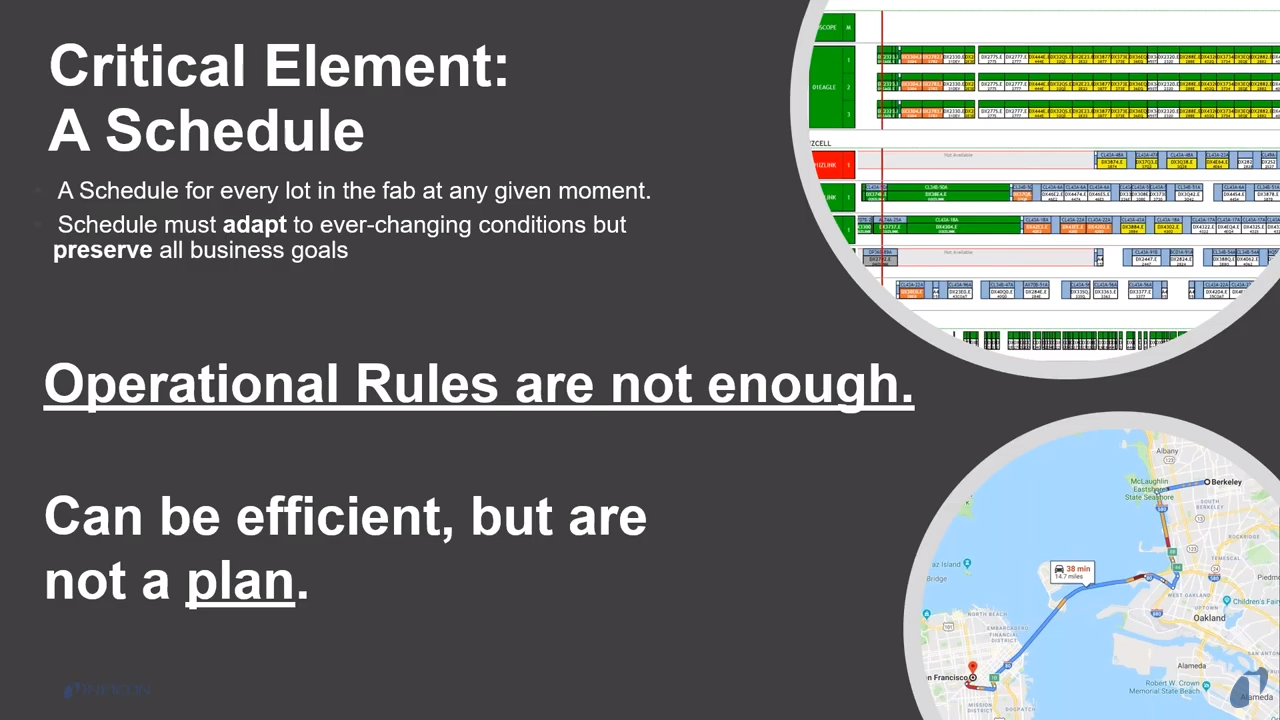September 2019
Welcome and FPS Product Introduction from John Behnke, General Manager »
Early Success with Factory Dashboard at MACOM »
Factory Scheduler for Backend Manufacturing »
Metrology Sampling Optimizer »
NextMove Metrics Track WIP Delivery Performance »
Factory Dashboard Lots Page Redesign »
A Data-Oriented Perspective on Progress Toward a Self-Driving Fab »
A Data-Oriented Perspective on Progress Toward a Self-Driving Fab
 |
Watch this Talk on the INFICON YouTube Channel
A Data-Oriented Perspective on Progress Toward a Self-Driving Fab
Length 29:09
Background
Imagine a problem that combines the complexity of solving chess with the difficulty of implementing self-driving cars. Even though it sounds impossible, this is a reasonable description of the challenges faced by every factory as they continuously work to intelligently optimize their operations.
As semiconductor factories continue to move toward the ideal of intelligent and automated decision-making, new pressures are being applied for the maintenance and integration of existing factory data systems and for methods of acquisition, storage and utilization of new data.
Meanwhile, advances in both data architecture and computational technologies such as artificial intelligence and machine learning raise questions about the applicability of new tools to the world of semiconductor manufacturing.
While the term "Self-Driving Fab" is to be taken light-heartedly (for now), considerable effort is being invested in the continuous improvement of automated decision-making. Critical areas ranging from operations to yield all rely on the fidelity and utility of a factory's digital twin.

Figure 1: Self driving fab requires a complete digital twin and more than just rules for operations.
Overview of the Talk
In this talk, we focus on the common types of factory data used for automated operational decision-making and control.
We present an order-of-magnitude overview of the scale of various types of data, as well as the present state of common architectures and protocols uniting them. The distinctions between logical, physical and simulated data are discussed, as well as the different roles each type plays in running a fab and the potential for growth of each.
We give a historical perspective on some common design decisions of legacy data systems and identify areas where novel requirements may drive change.
We also offer a perspective on newer technologies such as cloud architecture and Artificial Intelligence/Machine Learning in light of their suitability for enabling advances in automated fab operations, and what types of changes are required to support them.